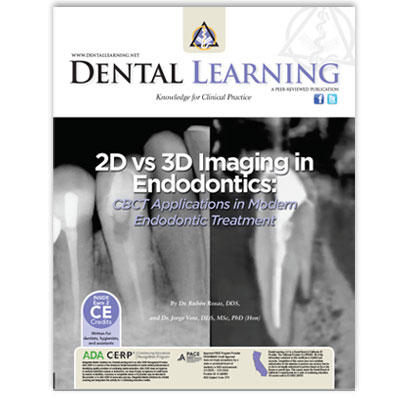 The use of cone beam computed tomography (CBCT) in endodontics has expanded in recent years. 3D imaging adequately supports the interpretation of dental anatomy and surrounding areas during root canal therapy. To assist decision making in endodontic cases, experts recommend small field-of-view (FOV), high-resolution CBCT imaging for diagnostic and treatment planning as well as for intraoperative procedures and managing cases post-treatment. This article presents some examples of everyday clinical cases to illustrate how CBCT images can help diagnose, treat, and solve endodontic problems.
The use of cone beam computed tomography (CBCT) in endodontics has expanded in recent years. 3D imaging adequately supports the interpretation of dental anatomy and surrounding areas during root canal therapy. To assist decision making in endodontic cases, experts recommend small field-of-view (FOV), high-resolution CBCT imaging for diagnostic and treatment planning as well as for intraoperative procedures and managing cases post-treatment. This article presents some examples of everyday clinical cases to illustrate how CBCT images can help diagnose, treat, and solve endodontic problems.
After completing this course, the reader should be able to:
- Discuss the American Association of Endodontists and American Academy of Oral and Maxillofacial Radiology joint position statement on the use of CBCT in endodontics.
- Explain how to use CBCT 3D imaging to evaluate unusual or complex anatomy of root canal systems, calci ed canals, and periapical pathosis.
- Describe how to assess sinusitis of endodontic origin using CBCT imaging.
- List other documented advantages of the routine use of CBCT in endodontics.
- Discuss the impact of 3D imaging in decision-making in endodontics.




